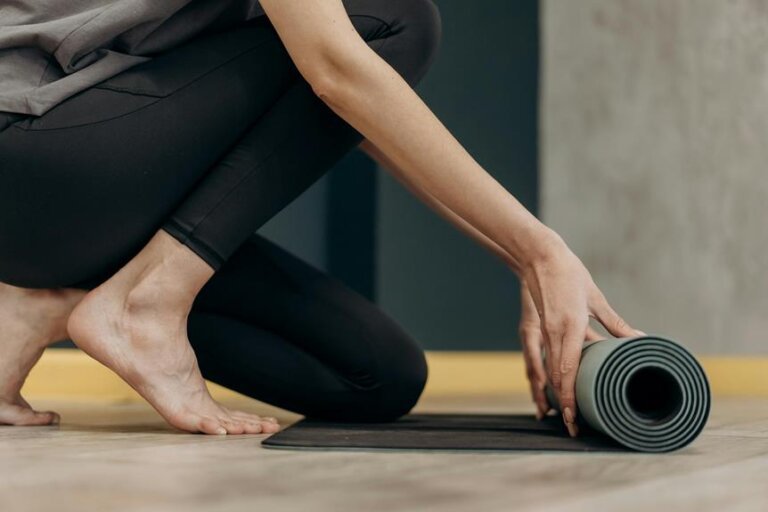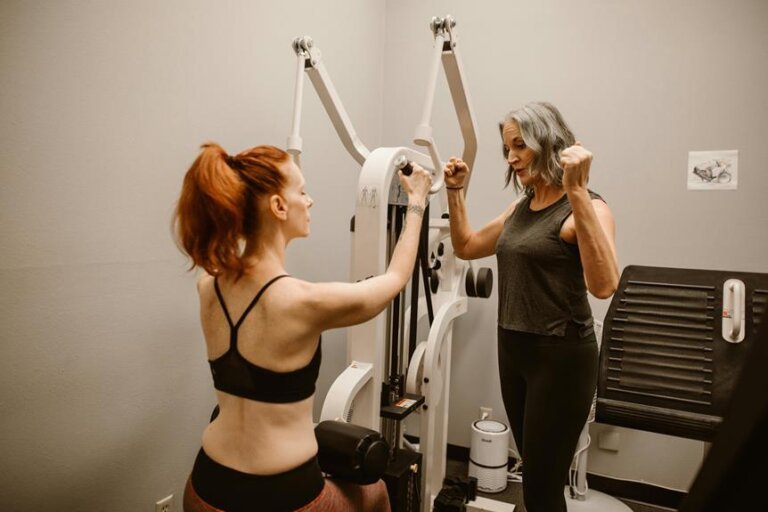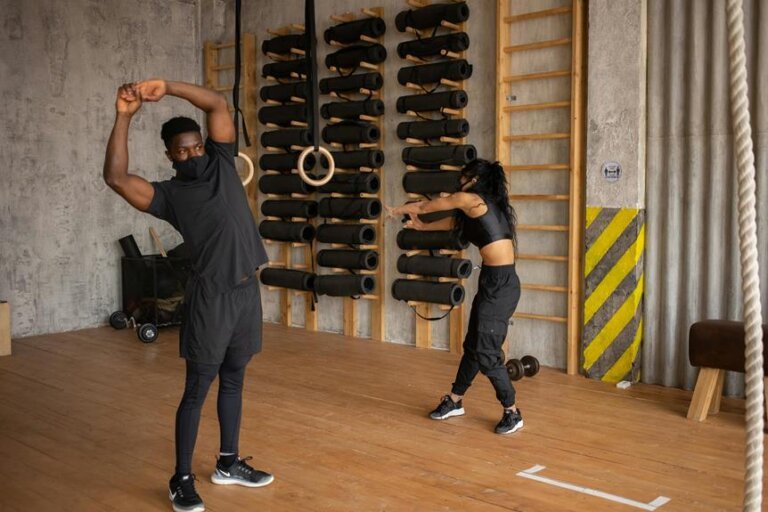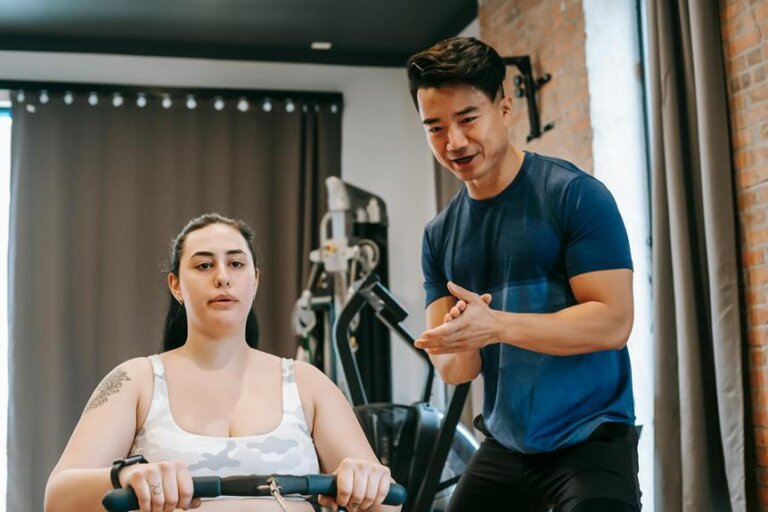Breaking Down Barriers: Overcoming Common Obstacles to Fitness in Older Age
Imagine yourself as a tree that has weathered many storms, standing tall and strong. Just like branches that may have bent but not broken, aging brings its own set of challenges to staying fit.
However, with the right approach, these obstacles can be navigated successfully. From limited mobility to chronic health conditions, each barrier can be addressed with patience and determination.
Discover how small steps and tailored strategies can pave the way towards a healthier and more active lifestyle in your later years.
Limited Mobility
If you're facing limited mobility as you age, incorporating gentle stretching exercises into your daily routine can help improve flexibility and range of motion. Starting your day with simple stretches can make a significant difference in how you move and feel. Focus on movements that target areas where you feel tightness or discomfort. Stretching can help alleviate stiffness and increase blood flow to your muscles, promoting better overall mobility.
In addition to stretching, consider low-impact exercises like water aerobics or tai chi. These activities are gentle on your joints while still providing a great workout. Water aerobics, in particular, can be beneficial for those with limited mobility as the water supports your body, reducing the risk of strain or injury. Tai chi, with its slow and controlled movements, can help improve balance and coordination.
Chronic Health Conditions
When faced with chronic health conditions, it's crucial to manage them effectively to maintain your fitness journey.
Make necessary exercise modifications that suit your condition to ensure a safe and beneficial workout.
Always consult your healthcare provider for personalized advice and guidance tailored to your specific health needs.
Managing Chronic Conditions
Dealing with chronic health conditions can present unique challenges as you strive to maintain your fitness and well-being in older age. Managing these conditions requires a tailored approach that considers your specific health needs. It's crucial to work closely with your healthcare provider to develop a comprehensive plan that addresses both your fitness goals and your medical requirements.
Monitoring your condition regularly, staying consistent with medications, and making necessary lifestyle adjustments are essential steps in managing chronic health issues effectively. Additionally, focusing on low-impact exercises, such as swimming or walking, can help improve your fitness level without exacerbating your conditions.
Exercise Modifications
To effectively modify exercises for individuals with chronic health conditions, tailor your workout routine to accommodate your specific needs and limitations. For example, if you have arthritis, consider low-impact activities like swimming or biking to reduce joint stress.
If you have heart disease, focus on aerobic exercises but monitor your intensity levels closely. Diabetes may require regular blood sugar checks and adjustments in your workout and meal timings.
For those with osteoporosis, incorporate weight-bearing exercises to strengthen bones, but avoid high-impact activities. Always listen to your body and communicate with your healthcare provider to ensure your exercise plan is safe and beneficial for your specific chronic condition.
Modifying exercises can help you stay active and healthy despite these challenges.
Consult Healthcare Provider
Considering your chronic health conditions, seeking guidance from your healthcare provider is crucial when planning your exercise routines to ensure safety and effectiveness.
Your healthcare provider can offer valuable insight into the types of activities that are suitable for your specific condition and provide personalized recommendations to help you reach your fitness goals. They can also help you understand any limitations or modifications that may be necessary to prevent exacerbating your health issues.
Time Constraints
When tackling time constraints, consider how you can manage your busy schedule more efficiently.
Prioritize your fitness activities by incorporating them into your daily routine.
Managing Busy Schedules
Juggling work, family, and personal commitments can make finding time for fitness a challenging task in older age. To manage your busy schedule effectively, consider integrating exercise into your daily routine.
Look for pockets of time where you can sneak in a quick workout, such as taking a brisk walk during your lunch break or doing bodyweight exercises while watching TV. Prioritize physical activity by scheduling it like any other important appointment.
Additionally, try to involve your loved ones in your fitness journey by planning active outings together, which can help you bond while staying healthy. Remember, even small increments of exercise can add up and make a significant impact on your overall well-being.
Prioritizing Fitness Activities
To effectively incorporate fitness activities into your busy schedule, it's essential to identify time constraints and prioritize physical exercise accordingly.
Start by evaluating your daily routine to pinpoint pockets of time that can be dedicated to working out. Consider waking up earlier or utilizing breaks during the day for short exercise sessions.
Additionally, try to combine activities when possible, such as walking or cycling to run errands. Remember, consistency is key, so aim for manageable goals that fit into your schedule.
Lack of Motivation
Feeling unmotivated to exercise can be a common barrier for many older individuals looking to improve their fitness. It's understandable that as you age, finding the drive to work out may become more challenging. However, it's crucial to remember that staying active plays a vital role in maintaining your health and well-being as you grow older.
One way to combat this lack of motivation is by setting realistic and achievable goals for yourself. Start small and gradually increase the intensity and duration of your workouts as you progress. Additionally, finding an exercise routine that you enjoy can make a significant difference. Whether it's taking a dance class, going for a nature walk, or joining a water aerobics group, discovering activities that bring you joy can help you stay motivated.
Moreover, consider enlisting the support of a friend or family member to exercise with you. Having a workout buddy can provide accountability and make exercising more enjoyable. Remember, it's never too late to start prioritizing your fitness and taking steps towards a healthier lifestyle.
Social Isolation
As you tackle the challenge of overcoming lack of motivation in your fitness journey, you may find that social isolation can present another significant obstacle to staying active in older age. Staying connected with others who share your fitness goals or simply enjoy physical activities can provide the motivation and support needed to stay on track. Social isolation, common among older adults due to factors like retirement or loss of loved ones, can lead to feelings of loneliness and lack of accountability in maintaining an active lifestyle.
To combat social isolation, consider joining group fitness classes at your local community center or gym. These classes not only offer a structured environment for exercise but also provide an opportunity to socialize and build relationships with like-minded individuals. Additionally, reaching out to friends or family members to exercise together or even just go for a walk can help combat feelings of loneliness while keeping you motivated to stay active. Remember, staying socially connected isn't only beneficial for your mental well-being but can also greatly impact your physical health and fitness journey.
Financial Constraints
Navigating through financial constraints while prioritizing your fitness goals requires strategic planning and resourceful decision-making. When facing limited financial resources, it's essential to explore cost-effective fitness options. Look for community centers or local parks that offer free or low-cost exercise classes tailored to older adults. Additionally, consider investing in versatile equipment like resistance bands or dumbbells that can be used for various exercises at home without breaking the bank.
To further alleviate financial burdens, research discounts for seniors at gyms or fitness centers in your area. Many facilities offer reduced membership rates or special promotions for older individuals. Another budget-friendly option is to utilize online resources such as workout videos or fitness apps that provide guided exercises at no cost.
Moreover, don't underestimate the value of incorporating everyday activities into your fitness routine. Walking, gardening, or dancing at home are excellent ways to stay active without spending extra money. By being proactive and creative in your approach, you can overcome financial constraints and prioritize your well-being in older age.
Fear of Injury
When approaching your fitness journey in older age, one common obstacle to address is the fear of injury. It's understandable to be concerned about getting hurt, especially if you're not as agile as you used to be. However, letting this fear hold you back can prevent you from reaping the numerous benefits that regular physical activity can provide.
To overcome this fear, it's crucial to start slow and gradually increase the intensity of your workouts. Consider working with a certified fitness trainer who's experience with older adults. They can design a program tailored to your abilities and help you perform exercises correctly to minimize the risk of injury.
Furthermore, focusing on activities that improve balance, flexibility, and strength can significantly reduce the likelihood of getting hurt. Yoga, tai chi, and resistance training are excellent options for older adults looking to enhance their physical well-being while minimizing the risk of injury. Remember, staying active is key to maintaining a healthy and independent lifestyle as you age.
Frequently Asked Questions
How Can Older Adults Incorporate Strength Training Into Their Fitness Routines to Improve Mobility?
To improve mobility, older adults can incorporate strength training into their fitness routines. Focus on bodyweight exercises, resistance bands, and light weights. Start slow, gradually increase intensity, and always consult with a fitness professional for guidance and safety.
Are There Specific Exercises Older Adults With Chronic Health Conditions Should Avoid?
Avoiding exercises that exacerbate your chronic health conditions is crucial. Listen to your body and consult with a healthcare provider or fitness professional to tailor your workout routine. Remember, safety first for a healthier you.
How Can Older Adults Make the Most Out of Short Workout Sessions to Overcome Time Constraints?
You can maximize short workout sessions by focusing on high-intensity interval training or circuit workouts. Incorporate strength and flexibility exercises to optimize results. Prioritize consistency and quality over quantity to make the most out of your time.
What Are Some Strategies for Staying Motivated to Exercise Regularly as an Older Adult?
Stay motivated by setting small, achievable goals, finding activities you enjoy, creating a routine, and tracking progress. Remember the benefits of exercise for your health and well-being. Stay committed to your fitness journey.
How Can Older Adults Combat Feelings of Loneliness and Social Isolation Through Fitness Activities?
To combat loneliness and isolation through fitness, prioritize group classes or activities. Engaging with others boosts motivation and creates a supportive environment. Consider joining a walking group, dance class, or senior fitness program to connect and stay active.
Conclusion
So, there you have it – you can conquer anything in your path to fitness, no matter your age!
With determination, dedication, and a sprinkle of courage, you can smash through those barriers like they're made of paper.
Don't let anything hold you back from reaching your fitness goals – you've got this!
Keep pushing forward, and watch as those obstacles crumble before you.
You're unstoppable!




